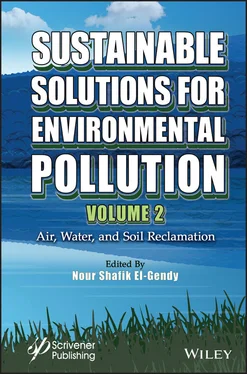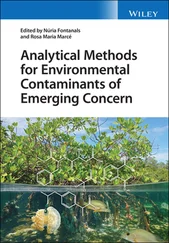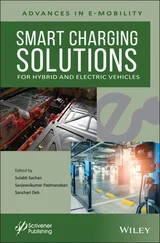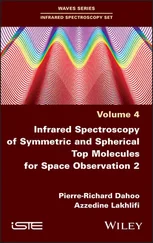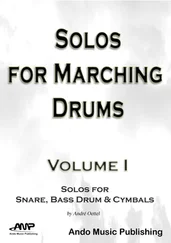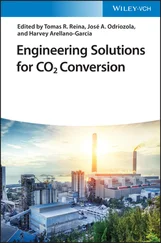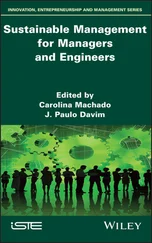1.12 Nuisances
1.12.1 Greenhouse Gases (GHG)
Some few studies directly measure GHG emissions from CWs by floating chambers or as their dissolved forms (Harrison et al. , 2005; Clough et al. , 2007; Beaulieu et al. , 2008). Methane emissions from paddy fields contribute about 9% of total global anthropogenic emissions (Saunois et al. , 2016). The magnitude of daily emissions varies from one study to another, from just a few µg/(m 2d) (Beaulieu et al. , 2010) to around 5 mg/(m 2d) (Beaulieu et al. , 2010) at around 5 mg/(m 2d) (Hinshaw and Dahlgren, 2013) for N 2O and from less than 0.4 mg/(m 2d) to almost 200 mg/(m 2d) for methane; i.e., from about 0.5 ml/(m 2d) to about 270 ml/(m 2d) (Wilcock and Sorrell, 2008). However, to our knowledge, no study has evaluated these emissions over a complete hydrological cycle. In addition, several studies show that GHG emissions are strongly dependent on organic input for both methane (Maeck et al. , 2013) and N 2O (Lefebvre et al. , 2004). Discharges of organic inputs, such as combined sewer overflow discharges, strongly condition these emissions. Vegetation helps to decrease GHG emissions and its maintenance should be carefully planned: decaying plant remnants increase GHG emissions as well as sediment disturbance induced by mechanical plant removal (Badiou et al. , 2019). Methane can be transported from the sediment to the atmosphere by emergent and floating-leaved plants themselves: a higher conductance (by a factor of two) has been observed in floating-leaved plants (American lotus and water lily) than in Typha angustifolia L. (Villa et al. , 2020). The influence of the type of vegetation is rarely considered and not incorporated in models.
Wastewater rich in OM and mineral compounds such as sulfates and phosphates can be anaerobically reduced to form noxious gases such as hydrogen sulfide (H 2S) or phosphine (PH 3). The property of sulfide ion to form insoluble precipitates with heavy metal ions makes it an excellent immobilizing agent for toxic metals in the bottom sediments. However, high sulfide concentrations can have a negative effect on wetland plant growth and microbial activity, particularly nitrification (Wu et al ., 2013). H 2S is a toxic and foul-smelling gas highly toxic to mammals (including humans) and aquatic species. The creation of dynamic oxidation-reduction gradients (aerobic-anaerobic) in the rhizosphere of CWs can simultaneously produce nitrification/denitrification and anaerobic ammonium oxidation (Anammox) and sulfur oxidation/reduction conditions that allow sulfide removal (Gonzalias et al., 2007; Jones et al. , 2017). Bacteria such as Desulfovibrio and Desulfobacter and Archaea, such as Archaeoglobus are able to reduce sulfate in anaerobic conditions: these conditions can be obtained for example when a surface-flow wetland is completely covered by free-floating plants (such as duckweed). The flora of aquatic systems (including wetlands) is diversely sensitive to sulfide. Threshold values between 10 µmol/L (for Carex sp.) and 1500 µmol/L (for P. australis ) have been reported (Lamers et al. , 2013).
The natural phenomenon known as “ Ignis fatuus ” or “Will-o’-the-wisp” (flickering glows observed during night on bogs and swamps) is due to the spontaneous ignition of phosphine (swamp gas) in the presence of methane resulting from the decomposition of OM under anaerobic conditions (Roels and Verstraete, 2001). Indeed, anaerobic wetlands are capable of producing phosphites and PH 3from phosphate (Bains et al. , 2019). The former has been detected in marsh gas (Dévai and Delaune, 1995; Geng et al ., 2005), paddy fields (Niu et al. , 2013), and wastewater and sewage (Devai et al. , 1999). The matrix-bound PH 3has been detected in various types of sediments in estuaries and coastal areas (Zhu et al. , 2011).
The main nuisance associated with CWs is the prospect of an increase of the mosquitoes’ population and the potential transmission of diseases (e.g., West Nile, dengue and chikungunya viruses, or Plasmodium malaria). Mosquitoes are Diptera insects of the family “Culicidae” represented by more than 3,500 species worldwide. They develop in two phases: a strictly aquatic thermo-dependent larval phase and an aerial adult phase. Larval development can last between five days and three months depending on the water temperature (thermo-dependence) and the availability of food resources (they consume small planktonic organisms). Following their emergence out of the water, adult females search for the proteins necessary for the maturation of their eggs thanks to blood meals on various hosts such as mammals, birds and reptiles (Valdelfener et al. , 2019).
A drastic strategy, for subsurface flow structures, is to ensure that no area will remain in water for a period of more than four days. Running and covered water minimizes mosquito development. Water levels can be managed at certain times of the year to create habitat that is hostile to mosquito development. In the case of permanent water bodies, such as FSF-CWs, the most effective strategy consists to achieve a well-balance ecosystem, allowing the permanent presence of communities of predators and competitors of larval mosquitoes (fish, crustacean zooplankton, and aquatic insects) and imagoes (insects, amphibians, bats, and birds such as swallows) (Medlock and Vaux, 2015). More permanent CWs have more predators, and therefore, mosquitoes’ density is reduced (Holmes and Cáceres, 2020). However, caution should be exercised on the introduction of non-native fish species. Indeed, an overpopulation of predators can considerably reduce macro-invertebrate diversity and unbalance the water bodies (Becerra-Jurado et al. , 2012).
Muskrats ( Ondatra zibethicus ) and coypus ( Myocastor coypus ) are burrowing animals often found in natural wetlands. Their presence in FSF-CWs should therefore be expected. Both are mostly herbivores, although muskrats can also consume some aquatic animals such as shells. Both species are native from America and have been introduced in Europe for their fur: they are now considered as invasive. Coypus dig burrows in the banks and weaken them to the point of collapse. Equipment must be protected against their teeth as they are capable of cutting electrical cables.
In open water systems such as FSF-CWs, nutrients (N and P) favour the over-development of algae and cyanobacteria in spring and summer. When starving on nutrients, cyanobacteria can die explosively, releasing various kinds of toxins (neurotoxins, cytotoxins, endotoxins, or hepatotoxins), collectively known as cyanotoxins. The relations between nutrients feeding in function of hydrologic conditions (storm and non-storm) and cyanobacteria death are still delicate to understand (Hartshorn et al. , 2016). Indeed, proliferation of toxin-producing cyanobacterial blooms is attributed to a large number of environmental factors, including: unbalanced N and P inputs (leading to silicate starvation and the disappearance of diatoms with siliceous frustules); increased temperature, water residence times, vertical stratification, and pH. All of this will be exacerbated by climate change (Howard et al. , 2017). The toxin releases pose a danger to humans and animals, in the wetland themselves as well as in the water bodies downstream (Griffiths and Mitsch, 2020).
Читать дальше
